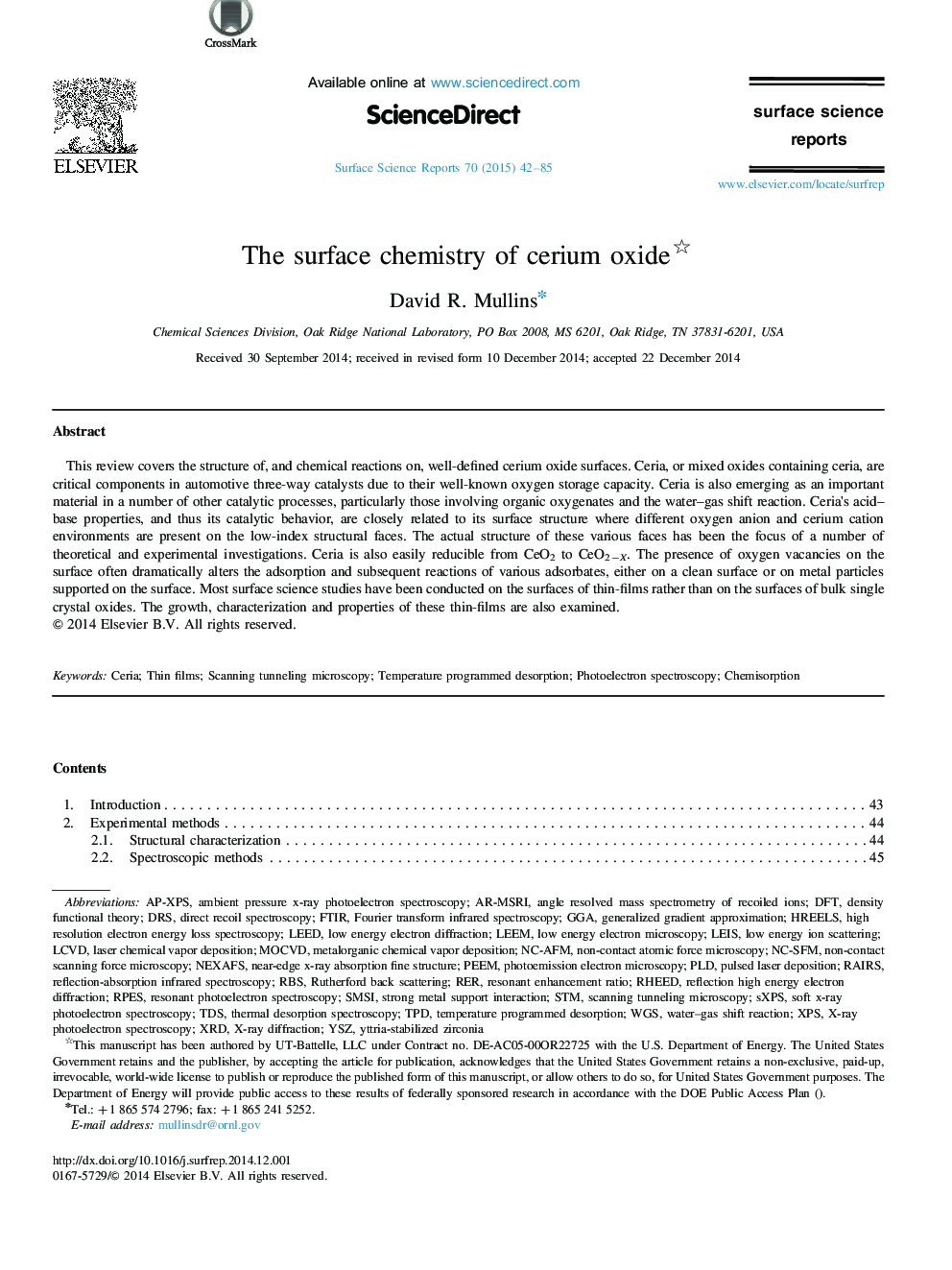| Article ID | Journal | Published Year | Pages | File Type |
|---|---|---|---|---|
| 7845102 | Surface Science Reports | 2015 | 44 Pages |
Abstract
This review covers the structure of, and chemical reactions on, well-defined cerium oxide surfaces. Ceria, or mixed oxides containing ceria, are critical components in automotive three-way catalysts due to their well-known oxygen storage capacity. Ceria is also emerging as an important material in a number of other catalytic processes, particularly those involving organic oxygenates and the water-gas shift reaction. Ceria׳s acid-base properties, and thus its catalytic behavior, are closely related to its surface structure where different oxygen anion and cerium cation environments are present on the low-index structural faces. The actual structure of these various faces has been the focus of a number of theoretical and experimental investigations. Ceria is also easily reducible from CeO2 to CeO2âX. The presence of oxygen vacancies on the surface often dramatically alters the adsorption and subsequent reactions of various adsorbates, either on a clean surface or on metal particles supported on the surface. Most surface science studies have been conducted on the surfaces of thin-films rather than on the surfaces of bulk single crystal oxides. The growth, characterization and properties of these thin-films are also examined.
Keywords
RERAP-XPSRAIRSPLDPEEMMOCVDLEEMLEEDRBSNEXAFSDRSNC-AFMLCVDGGADFTLEISGeneralized gradient approximationRutherford back scatteringLaser chemical vapor depositionMetalorganic chemical vapor depositionNear-edge X-ray absorption fine structureFTIRHigh resolution electron energy loss spectroscopyReflection-absorption infrared spectroscopyFourier transform infrared spectroscopyPulsed laser depositionPhotoemission electron microscopyLow energy electron microscopyNon-contact atomic force microscopyDensity functional theoryHREELSLow energy electron diffractionLow energy ion scattering
Related Topics
Physical Sciences and Engineering
Chemistry
Physical and Theoretical Chemistry
Authors
David R. Mullins,
